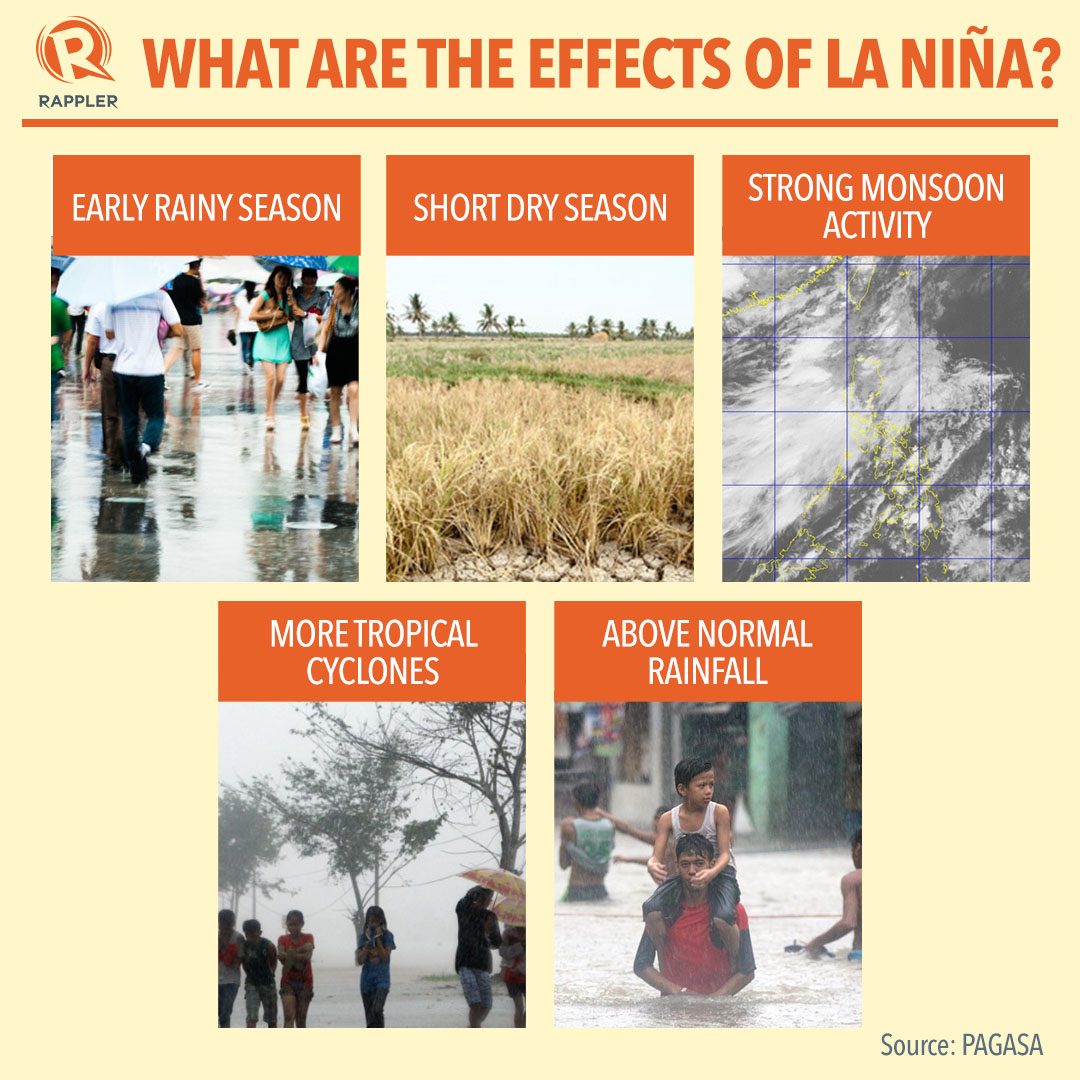SUMMARY
This is AI generated summarization, which may have errors. For context, always refer to the full article.

MANILA, Philippines – The state weather bureau PAGASA warns of above normal rainfall conditions in the coming months, which may trigger floods and landslides in vulnerable areas.
In a press briefing on Wednesday, August 24, PAGASA said provinces in Central Luzon, Eastern Visayas and portions of Mindanao will be experiencing more rainfall than usual starting September. By December, more rain will be experienced in the said areas.
PAGASA added that in September, we may experience 2 to 4 tropical cyclones in the country.
PAGASA Tropical Cyclone forecast for coming months
— Rappler (@rapplerdotcom) August 24, 2016
September 2-4
October 1-3
November 1-3
December 1-2
January 0-1
February 0-1#Habagat2016
La Niña still possible
PAGASA said several climate models still predict 55% to 65% chance of La Niña developing by the last quarter of 2016.
This time, however, models say it may develop by late September to October, 3 months earlier than the initial prediction. (READ: PAGASA warns of possible La Niña by end of 2016)
The projected La Niña is expected to be short lived, according to PAGASA, and by February next year, the rainfall conditions may start to return to normal.

Prepare, don’t be complacent
Although the possible La Niña is likely to be weak, Ana Solis, senior weather specialist of PAGASA’s Climate Monitoring and Prediction Section, said it should be taken seriously because it may still cause flooding and landslides, citing 2005 La Niña as an example.
“Nung 2005 to 2006, weak La Niña din po iyon. Nagstart na October, November, December. Short-lived lang din po siya, natapos ng around first quarter ng 2006. But then nagkaroon po ng several flooding and landslides sa may Luzon area, which during the first quarter po ng year na yun supposed to be dry po yung mga Luzon areas,” Solis explained.
(The 2005 to 2006 La Niña was also weak. It started in October, November, December. It was also short lived, it ended in the first quarter of 2006. But then, several flooding and landslides still occurred in Luzon areas, which during the first quarter of that year, were supposed to be dry.)
PAGASA advises the public to:
- check flood warning advisories from PAGASA, local disaster management office and the news
- maximize rainwater harvesting and storage
- Remove anything that obstructs the free flow of water in rivers, canals, irrigation channels, etc.
- Cooperate on local measures to help manage the impacts of La Niña
- Prepare post-harvest facilities for drying and storage of rice, corn, etc
- Get crop insurance and check advisories from your local agriculture officials
- Always have an emergency disaster kit ready (READ: Time to prepare the disaster kit)
–Rappler.com
Add a comment
How does this make you feel?
There are no comments yet. Add your comment to start the conversation.